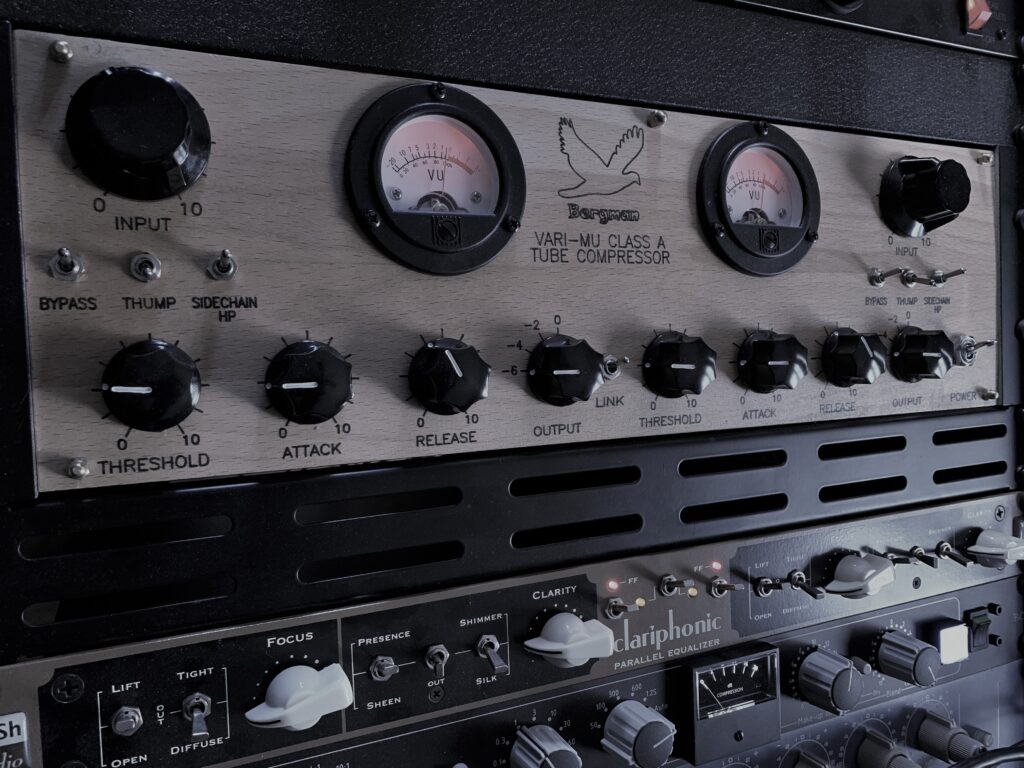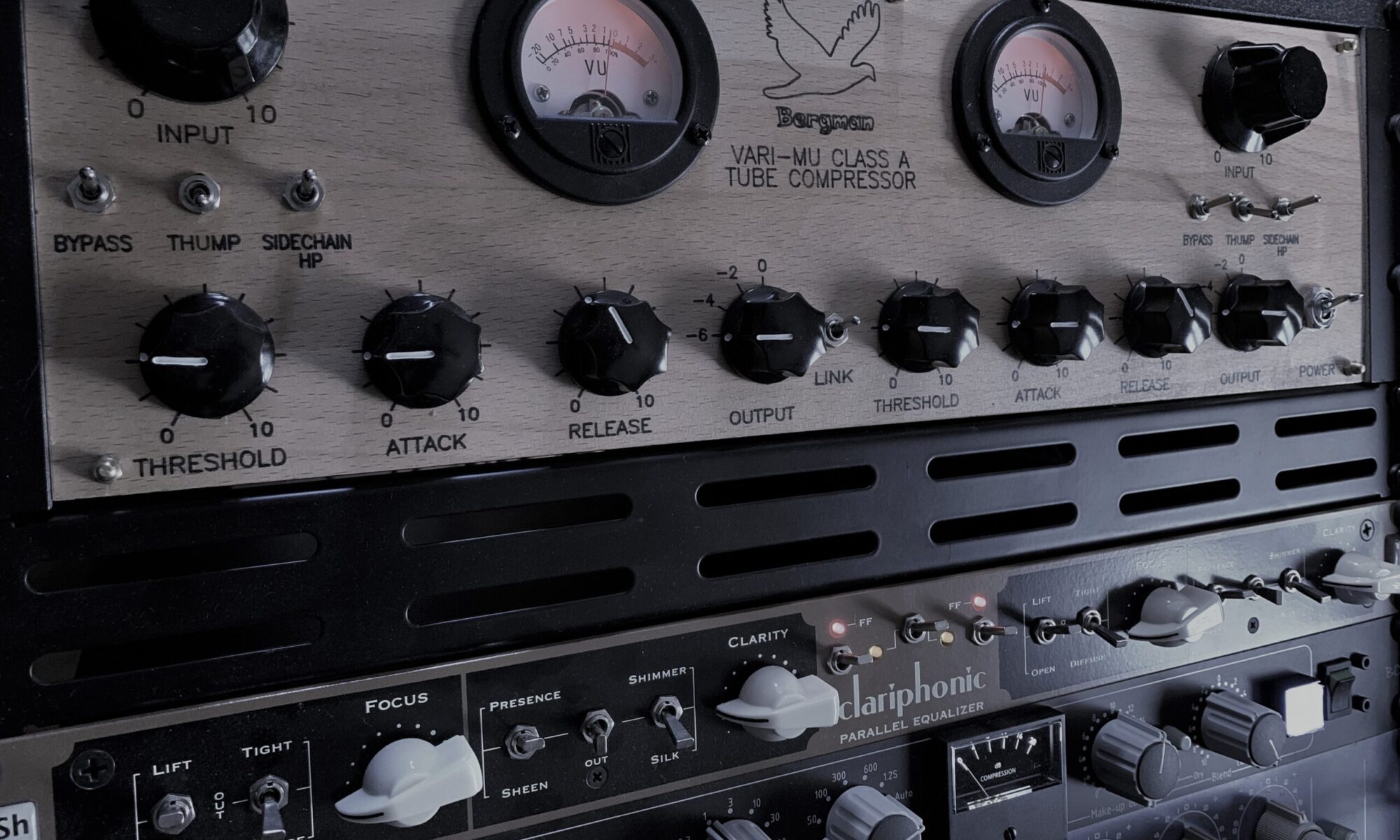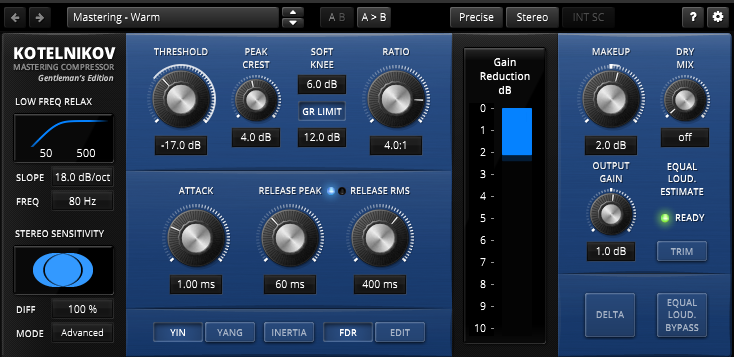Vari-Mu
The Vari-Mu compressor, also known as a tube compressor, is a type of analog compressor that was first developed in the 1950s. The name “Vari-Mu” comes from the fact that the compression ratio of the device can vary, as opposed to fixed-ratio compressors.
Vari-Mu compressors are characterized by their smooth, warm, and musical compression characteristics, making them particularly popular in professional audio recording studios for dynamic control of vocal and instrument recordings. The design of a Vari-Mu compressor typically consists of a vacuum tube amplifier circuit, with a gain reduction element that varies the gain of the amplifier in response to the input signal level. This design results in a unique and musical sound that has become sought after by audio engineers and producers.
The origin of the Vari-Mu compressor can be traced back to early experiments with vacuum tube circuits for audio signal processing. The first commercially available Vari-Mu compressors were manufactured by companies such as Altec Lansing and Fairchild in the 1950s, and the technology has continued to evolve and be refined over the decades since.
Today, Vari-Mu compressors are still widely used in professional audio recording studios, and many modern recreations and interpretations of the classic designs are available from a variety of manufacturers. One of the most popular being the Manley Vari-Mu.
In my studio, I use use a design by Bergman Labs out of Sweden.

VCA
The concept of a voltage-controlled amplifier (VCA) compressor has its roots in analog sound recording and mixing technology. The first VCA compressors were developed in the 1970s and were widely used in the recording industry to control the dynamic range of audio signals.
A VCA compressor works by using a voltage-controlled amplifier to adjust the gain of an audio signal in real-time based on the level of the input signal. This allows the compressor to reduce the dynamic range of the audio and make the quiet parts louder and the loud parts quieter. The VCA compressor is widely used today in many different types of audio equipment, including mixing consoles, recording studios, and live sound reinforcement systems.
In the analog era, VCA compressors were implemented using analog circuits, but today they are often implemented using digital signal processing algorithms in digital audio equipment. Nevertheless, the basic concept of using a voltage-controlled amplifier to control the gain of an audio signal remains the same, and the term “VCA compressor” is still commonly used to describe this type of compression technology.

FET
The FET (Field-Effect Transistor) compressor is a type of audio compressor that uses Field-Effect Transistors (FETs) as its gain-reducing element. The exact origin of the FET compressor is not known, but it is believed to have been developed in the 1960s, when FETs were first introduced as a replacement for vacuum tubes in audio equipment.
FETs have a unique characteristic compared to other gain-reducing elements, such as vacuum tubes or operational amplifiers, that makes them well suited for use in compressors. They have a fast response time and a smooth, natural sound that has made them a popular choice for use in a variety of audio applications, including mixing consoles, outboard gear, and guitar amplifiers.
Over the years, the design of FET compressors has evolved, and many different variations of the basic concept have been developed. One of the most popular FET compressor designs is the Urei 1176. Today, modern FET compressors like the Chandler Germanium continue to be widely used by audio engineers, producers, and musicians alike, and they are considered an essential tool in the recording studio.

Are you looking for help with your next music release? Email me at [email protected]. Let’s get your music ready for distribution!



